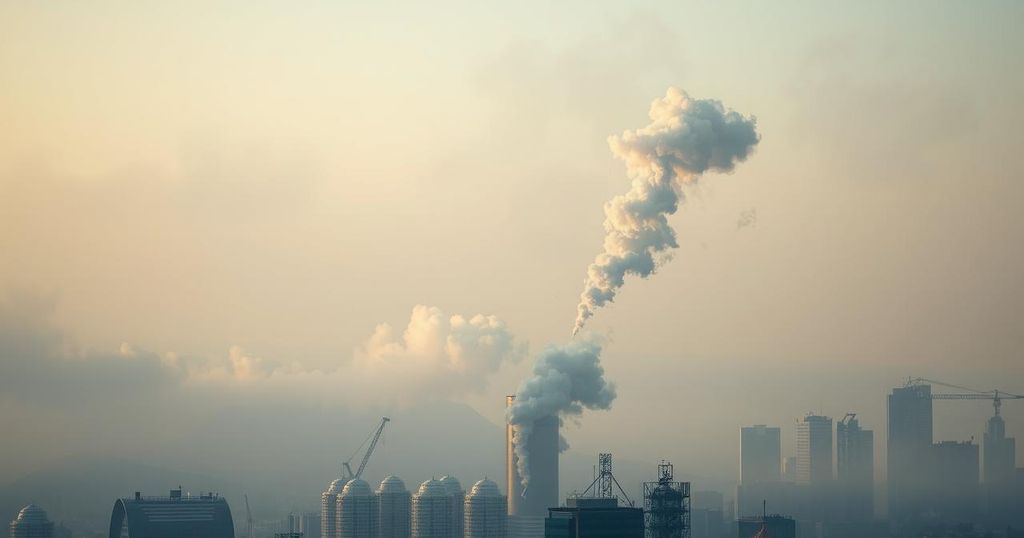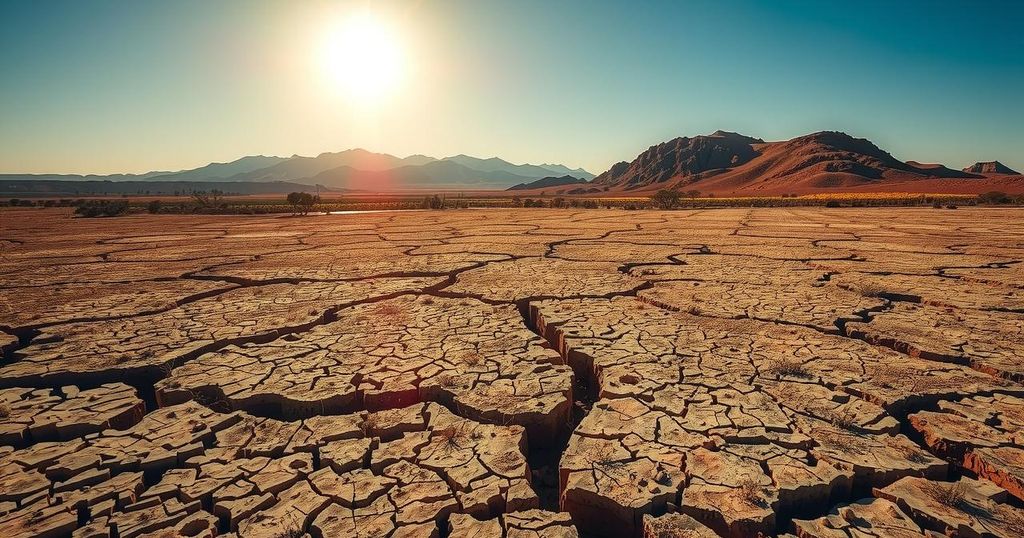Pakistan Ranks Third Most Polluted Country in 2024 IQAir Report
Pakistan ranked third in the 2024 Global Air Quality Report by IQAir, experiencing an unprecedented smog crisis that affected millions. The PM2.5 concentration was found to be significantly above WHO’s safe levels. Pakistan is second in pollution within Central and South Asia, behind Bangladesh. The report draws attention to widespread health issues due to poor air quality, reflecting a broader global pollution crisis.
In the 2024 rankings published by IQAir, Pakistan has been designated as the third most polluted country globally, following Chad and Bangladesh. This report highlights the severe smog season experienced last year, particularly affecting Punjab, where the situation was termed a “calamity,” necessitating medical assistance for approximately two million residents. Governmental measures, including lockdowns and school closures, were implemented to address this pressing issue.
The report specifies that Pakistan had an average PM2.5 concentration of 73.7 micrograms per cubic meter, significantly exceeding the World Health Organization’s safety standards by nearly 15 times. Despite the alarming smog levels, Pakistan’s average pollution levels in 2024 remained consistent with the previous year’s metrics. Within Central and South Asia, Pakistan ranked second in pollution, with urban areas such as Lahore and Multan listed among the most impacted cities.
Various factors contribute to Pakistan’s persistent pollution levels, including biomass burning, industrial activity, and vehicular emissions, as detailed by the report. Comparatively, while cities like Peshawar and Islamabad experienced increased pollution levels this year, Karachi benefitted from a decrease in PM2.5 readings. Notably, during November, five cities in Pakistan recorded levels surpassing 200 microns.
The study utilized data from over 40,000 air quality monitoring stations across numerous countries and regions. Alarmingly, approximately 70% of the population in Pakistan reported health complications related to smog exposure. The pollution levels in Chad were found to be 18 times above the WHO’s safe threshold, while Indian cities continue to suffer, with six of the world’s nine most polluted cities situated in the country.
Remarkably, the report has identified Byrnihat in India as the most polluted metropolitan area in 2024, with a PM2.5 reading averaging 128.2 micrograms per cubic meter. Though there was a slight improvement in India’s overall pollution levels, cities like Baddi exhibited extreme readings, indicating the ongoing crisis in the region. In contrast, Oceania was noted as the cleanest region, with over half of its cities meeting WHO guidelines.
The report further indicated that European countries such as Bosnia, North Macedonia, and Serbia suffer from significant pollution issues, with PM2.5 levels exceeding WHO limits. Only seven nations possess air quality concentrations under WHO guidelines, emphasizing the critical need for global attention to combat air pollution effectively. The dire impacts of air pollution, categorized as a major health risk, were also outlined in the “State of Global Air 2024” report, attributed to 8.1 million premature deaths globally in 2021.
In conclusion, Pakistan’s position as the third most polluted country in 2024 underscores the urgent need for effective pollution control measures. Despite governmental attempts to mitigate the situation, health implications remain critical, with a substantial portion of the population affected by poor air quality. Regional comparisons indicate wider patterns of pollution, particularly within South Asia, highlighting the necessity for collaborative international strategies to improve air quality and protect public health.
Original Source: www.dawn.com




Post Comment